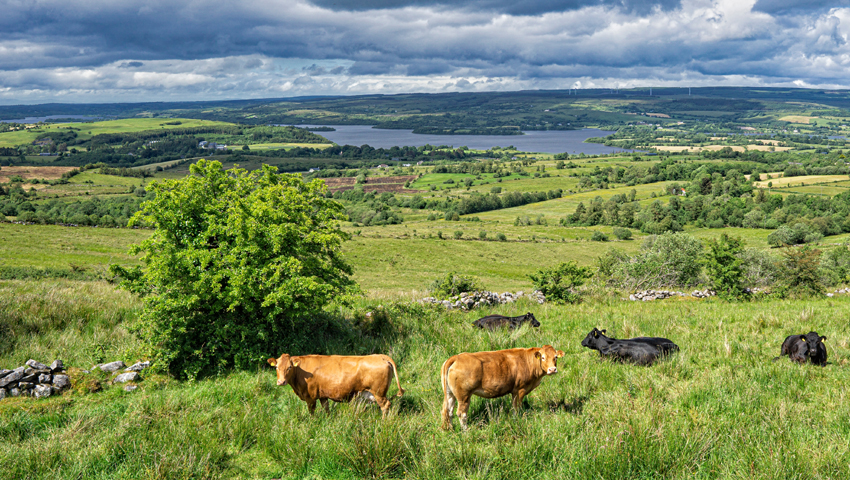This article, by Dr Giulia Bondi, first appeared on the Teagasc website
The Signpost Deep Soil Sampling Campaign, led by Dr Giulia Bondi and her team at Teagasc Johnstown Castle, has unearthed fascinating results on the levels of carbon held within Irish agricultural soils.
In this article, Giulia shares some of the preliminary findings from the project, which involved visiting over 100 farms, 12 counties and analysing the soil carbon content of 2,919 soil and bulk density samples up to 60cm depth.
The research shows that managed mineral soils are sequestering more carbon than previously estimated.
Soil carbon and soil quality measurements were recorded at various depths throughout the soil profile on farms with differing land uses, management regimes and soil types.
The Soil Organic Carbon (SOC) to Clay ratio, developed by Johannes et al., is a recognised soil quality indicator for European soils and it provides an understanding of the carbon that is bound to finer minerals such as clay. This indicator set thresholds of good, moderate and degraded soils.
In the Signpost Deep Soil Sampling Campaign, this assessment was carried out for the top soil for all the farming systems. The preliminary results so far show that 92 per cent of the farms had really good soil quality, 6 per cent had moderate quality and <1 per cent had poor quality and this was often associated with tillage farming systems.
Soil type differences for the SOC to Clay ratio were also examined. On the sampled dairy farms, soil organic carbon content ranges from 2 – 20 per cent in heavier soils. Higher clay content is typically linked to an increased capacity for carbon sequestration. Therefore, on farms with similar clay content, management practices become crucial in determining the overall carbon sequestration potential of these systems.
Soils with a soil carbon rich profile of more than 20 per cent are considered organic soils and these are quite interesting soils because they can either serve as a sink or source of carbon, depending on how they are managed, but also climate would play an important role on the capacity of these systems to sequester carbon in the long term.
Interestingly, there was no difference between soil type on tillage farms, which suggests that land use has an overriding effect on the prevalence of carbon that is stored in these systems.
Generally there is a lot of carbon in mineral soils, especially associated to certain soil types, so the focus should be not only increasing carbon sequestration but on maintaining a high level of carbon where it is already available.
Carbon stocks at depth
Up to depths of 60cm, our research identified carbon stocks ranging between 63 to 123 tonnes of carbon per hectare on the Signpost farms. For context, Mediterranean soils are reported to have a lower mean carbon stock or approximately 60 tonnes of carbon per hectare, so our managed mineral soils are quite rich in carbon with respect to the mean carbon stock value from EU soils.
We also examined how carbon stocks vary by soil profile depth and soil type. Extensive grasslands over well-drained soils have higher carbon in the top soil, and that tends to decrease with depth. When we look at the same farming system, but over more clay rich soils, we see that it increases in carbon up to 30cm.
Interestingly in intensive grasslands, which are more heavily managed, for example under a silage production system or reseeded over time, we see a higher carbon stock in the deeper layers, and this is probably due to carbon that is being buried down the profile during ploughing operations.
The difference becomes even more evident though when we look at soils that are rich in clay, and this highlights the capacity of clay to keep carbon bound and to the potential for long-term carbon storage.
The findings outlined above are preliminary and may change in the future, as short-term management impacts on soils are currently being investigated.
